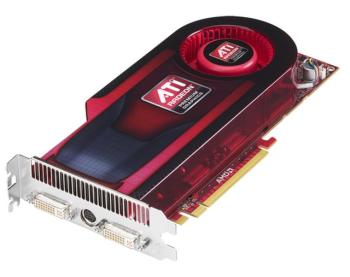
August 11, 2021
Almost two years ago, I realized I knew nothing about computers. My partner caught a wild hair one evening and decided to build a gaming PC (personal computer). Not only would this little activity be the beginning of the end for my nerves, but it would also make me realize that I didn’t know much of anything about the innerworkings of computers.
I knew how the pieces worked with the operating system and that these pieces can be upgraded, but I didn’t know anything about the specifications these items. So, while I knew he was looking for CPU (central processing unit), RAM (random-access memory), motherboards (the circuit board that is the foundation of a computer), and monitors (screens), he completely lost me at “GPU” and “graphics cards.” I wouldn’t dare ask him—I didn’t want to hear more words I couldn’t understand! For example, he’s currently pining for one of these:
Now, I can read all these words, but I don’t know what any of them mean. So, what even is a GPU?
GPU is short for “graphics processing unit,” also referred to as graphics cards or video cards. A GPU is a special computer chip designed to speed up 3D graphics rendering, as in how quickly images, animations, videos, and graphics are created and then displayed on the computer screen. For instance, say you have a new computer game you’re excited to play but then learn you don’t have a strong enough GPU.
This means your computer may not even be able to play the game file, much less give you the best gameplay experience. Most PC games give players minimum and recommended specifications (like this game, for example) for the best look and smoothest gameplay. GPUs aren’t only for playing PC games. These days, you can find GPUs in artificial intelligence (such as virtual reality headsets and driverless cars) and photo and video editing applications. To find out what type of GPU you have in your computer, try these steps:
On a Windows-based PC: Right-click on the Start icon and click on Task Manager in the pop-up menu. In the Task Manager window, choose the Performance tab and click GPU.
If you’ve installed some new software or are curious to see how certain apps affect your GPU, return to the Processes tab to monitor GPU usage. You may see some apps running at 100% GPU usage. Complete GPU usage can be normal in certain situations for certain lengths of time, but you’ll want to be aware of what app is running during high-usage times and if your device is struggling to keep up. If it’s not a gaming or photo/video editing software, you may want to complete a malware scan on your computer.
On a MacOS device: Click the Apple menu in the upper left-hand corner, then select About This Mac. You’ll see Graphics and then what kind of graphics card is installed.
For more in-depth information about the graphics card, click System Report in the same window, then find Graphics/Displays in the listing.
To monitor GPU usage on your Mac, launch the Activity Monitor app (Go > Applications > Utilities folder > Activity Monitor… Or use Spotlight search).
If you’re interested in learning more about graphic cards, check out “Understanding the Graphics System” with Dan Gookin from LinkedIn Learning for Library. Or if you’re thinking of upgrading your graphics card and want to know how to install it, watch Mike Meyers’ “Installing a Graphics Card” video, also from LinkedIn Learning for Library.
While you probably won’t build your own PC or manually upgrade your GPU any time soon, you can still thank your graphics card for the awesome gameplay visuals. To read more tech blogs like this one, check out the rest of the What Is…? Tech Series blogs.
Happy learning!
Brityni S.
Consumer Tech Specialist
Similar blogs:
https://www.mymcpl.org/blogs/what-vpn
https://www.mymcpl.org/blogs/what-phishing
https://www.mymcpl.org/blogs/what-encryption
https://www.mymcpl.org/blogs/what-dark-web
https://www.mymcpl.org/blogs/what-internet-things
Read Similar Blogs:



